Membra Jesu Nostri
Membra Jesu Nostri (English: The Limbs of our Jesus), BuxWV 75, is a cycle of seven cantatas composed by Dieterich Buxtehude in 1680, and dedicated to Gustaf Düben. The full Latin title Membra Jesu nostri patientis sanctissima translates to "The most holy limbs of our suffering Jesus". This work is known as the first Lutheran oratorio.[1] The main text are stanzas from the Medieval hymn Salve mundi salutare[2] – also known as the Rhythmica oratio – a poem formerly ascribed to Bernard of Clairvaux, but now thought more likely to have been written by Medieval poet Arnulf of Leuven (died 1250). It is divided into seven parts, each addressed to a different part of Christ's crucified body: feet, knees, hands, sides, breast, heart, and face. In each part, biblical words referring to the limbs frame verses of the poem.
| Membra Jesu Nostri | |
|---|---|
| Cantata cycle by Dieterich Buxtehude | |
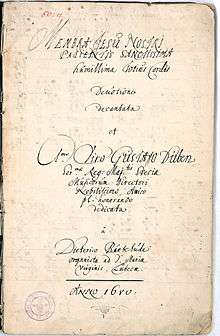 Title page | |
| Full title | Membra Jesu nostri patientis sanctissima |
| English | The most holy limbs of our suffering Jesus |
| Catalogue | BuxWV 75 |
| Text |
|
| Composed | 1680 |
| Movements | 43 in seven cantatas |
| Vocal | 2 sopranos, alto, tenor, bass |
| Instrumental | |
Structure
Each cantata in Membra Jesu Nostri is divided into six sections; an instrumental introduction; a concerto for instruments and five voices (SSATB), with the exception of the fifth and sixth cantatas where only three voices are used; three arias for one or three voices, each followed by an instrumental ritornello; and an exact reprise of the concerto. The first and the last cantata of the cycle deviate from this pattern. In the first cantata the choir repeats the first aria after the reprise, in the last one, Ad faciem, 5 parts sing the last aria, and then a final Amen instead of the reprise concludes the cycle.
The structure of Membra is dictated by its text. Buxtehude selected biblical verses for the concertos, and three strophes from each part of the poem Salve mundi salutare for the arias in each cantata. The biblical words are chosen for mentioning the member of the cantata and taken mostly from the Old Testament. The metre of the poetry unifies the arias' rhythmic patterns.
- I Ad pedes:
- Sal-ve mun-di sa-lu-ta-re
- II Ad genua:
- Quid sum ti-bi re-spon-su-rus
- III Ad manus:
- In cru-o-re tu-o lo-tum
- V Ad pectus:
- Pec-tus mi-hi con-fer mun-dum
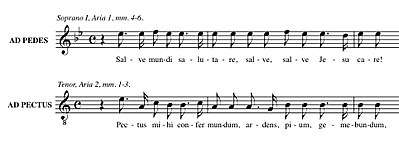
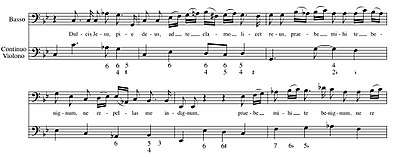
Cantatas
The work is scored for five voices SSATB who may also form the choir, two violins and basso continuo. A viola da gamba consort is called for only in part VI, Ad cor, to the heart.
The following table shows for each cantata the title and its translation, Tempo marking, the voices (SATB, first for the choir, then for the arias, with S2 for the second soprano), the Baroque instruments of two violins (Vl) and five violas da gamba (Vg), and the biblical text source for the concerto. The source for the arias is always Salve mundi salutare. The continuo, playing throughout, is not shown.
| No. | Title | Translation | Voices | Instruments | Text source |
|---|---|---|---|---|---|
| I | Ad pedes | To the feet | SSATB S S2 B | 2Vl | Nahum 1:15 |
| II | Ad genua | To the knees | SSATB T A SSB | 2Vl | Isaiah 66:12 |
| III | Ad manus | To the hands | SSATB S S2 ATB | 2Vl | Zechariah 13:6 |
| IV | Ad latus | To the sides | SSATB S ATB S2 | 2Vl | Song of Solomon 2:13–14 |
| V | Ad pectus | To the breast | SSATB A T B | 2Vl | 1 Peter 2:2–3 |
| VI | Ad cor | To the heart | SSB S S2 B | 5Vg | Song of Solomon 4:9 |
| VII | Ad faciem | To the face | SSATB ATB B | 2Vl | Psalms 31:17 |
I Ad pedes
(To the feet)
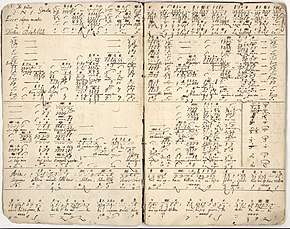
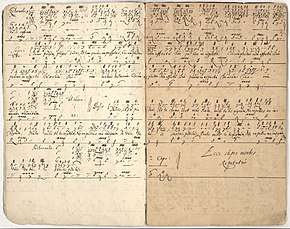
- 1 Sonata (instrumental introduction)
| |
|
|
| |
|
|
| |
|
|
| |
|
|
| |
| |
|
|
II Ad genua
(To the knees)
- 1 Sonata
| |
|
|
| |
|
|
| |
|
|
| |
|
|
|
III Ad manus
(To the hands)
- 1 Sonata
| |
|
|
| |
|
|
| |
|
|
| |
|
|
|
IV Ad latus
(To the sides)
- 1 Sonata
| |
|
|
| |
|
|
| |
|
|
| |
|
|
|
V Ad pectus
(To the breast)
- 1 Sonata
| |
|
|
| |
|
|
| |
|
|
| |
|
|
|
VI Ad cor
(To the heart)
In this part a consort of viola da gamba replaces the violins.
- 1 Sonata
| |
|
|
| |
|
|
| |
|
|
| |
|
|
|
VII Ad faciem
(To the face)
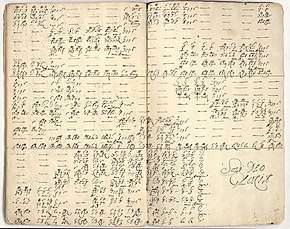
- 1 Sonata
| |
|
|
| |
|
|
| |
|
|
| |
|
|
| |
|
Selected recordings
- Choir of Magdalen College, Oxford, Opus Arte – 2014
- Claudio Cavina, La Venexiana – 2009
- John Eliot Gardiner, English Baroque Soloists, Monteverdi Choir – Archiv Produktion 447 298–2
- Ton Koopman, Amsterdam Baroque Orchestra & Choir – Erato
- René Jacobs, Concerto Vocale – 2003 – Harmonia Mundi – Soloists María Cristina Kiehr Soprano I, Rosa Dominguez Soprano II, Andreas Scholl Alto, Gerd Türk Tenor, Ulrich Messenthaler Bass (The soloists serve as the chorus) – a DVD of the recording with the same singers and the Schola Cantorum Basiliensis (2007) is available as a DVD.
- The Sixteen, Harry Christophers, CORO 16082 (Re-release)
- The Sixteen, Harry Christophers – 2001 – CKD 141 – Soloists Carolyn Sampson Soprano I, Libby Crabtree Soprano II, Robin Blaze Alto, James Gilchrist Tenor, Simon Birchall Bass (The soloists serve as the chorus)
- Masaaki Suzuki, Bach Collegium Japan – 1997 – BIS-CD-871
- Jos van Veldhoven, The Netherlands Bach Society – 2006 – Channel Classics, CCS SA 24006 – Soloists Anne Grimm Soprano I, Johannette Zomer Soprano II, Peter de Groot Alto, Andrew Tortise Tenor, Bas Ramselaar Bass (The soloists serve as the chorus)
- Konrad Junghänel, Cantus Cölln – 2005 – Harmonia Mundi – HMC901912
- Diego Fasolis director; Sonatori della Gioiosa Marca + Accademia Strumentale Italiana; Roberto Balconi alto, Caterina Trogu soprano I, Roberta Invernizzi soprano II, Mario Cecchetti tenor, Daniele Carnovich Bass; Choir of Radio Svizzera – 1997 NAXOS 8.553787
- Erik Van Nevel, Currende – 1998 – Eufoda 1294 – Soloists Johannette Zomer Soprano I, Anne-Marie Buyle Soprano II, Vincent Darras Alto, Jan Caals Tenor, Conor Biggs Bass, Currende Consort & Capella Currende
References
External links
- Literature by and about Membra Jesu Nostri in the German National Library catalogue
- Free sheet music of all choral parts at the Choral Public Domain Library
- Free score at IMSLP
- Scanned images of original manuscript in the Düben Collection, Uppsala University
- Salve Mundi Salutare – Article in the Catholic Encyclopedia
- Buxtehude: 'Membra Jesu Nostri' YouTube channel sample recordings
- Oratio rhythmica text after the Patrologia Latina at Bibliotheca Augustana